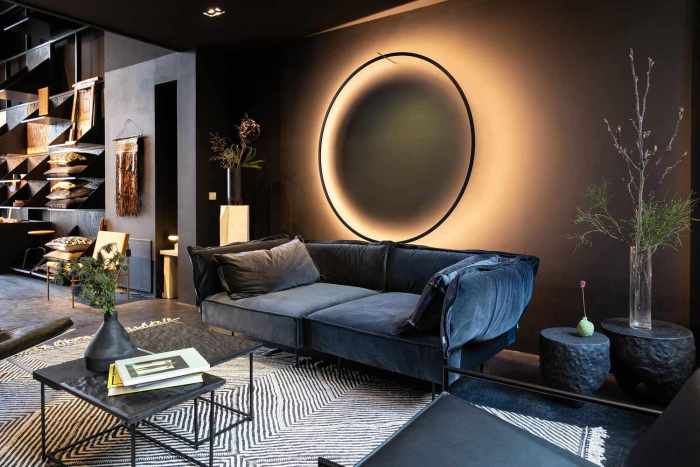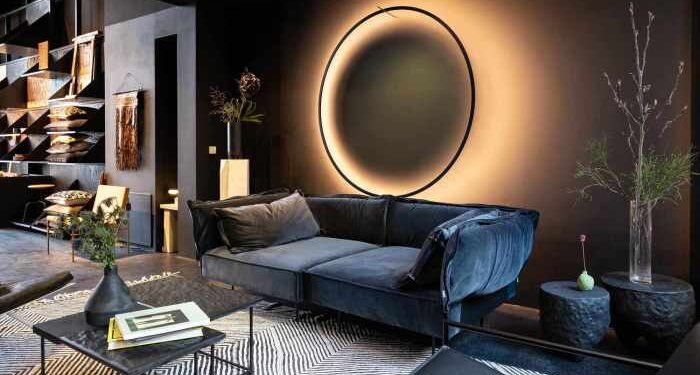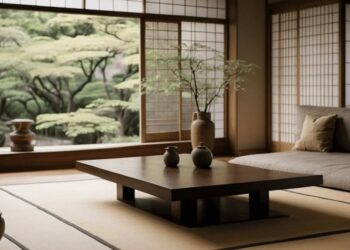Embark on a journey of transformation as we delve into the realm of interior lighting ideas to enhance mood and space. From illuminating the darkest corners to creating the perfect ambiance, this guide is your gateway to a well-lit, inviting environment that exudes warmth and style.
Explore the different facets of interior lighting and discover how a well-lit space can truly elevate your mood and redefine your living areas.
Types of Interior Lighting
Interior lighting plays a crucial role in setting the mood and enhancing the overall ambiance of a space. There are various types of interior lighting that can be used to create different atmospheres in different rooms.
Ambient Lighting
Ambient lighting, also known as general lighting, provides overall illumination to a room. It sets the tone for the space and ensures that there are no dark corners. This type of lighting is perfect for living rooms, bedrooms, and dining rooms.
Task Lighting
Task lighting is focused on specific areas where activities such as reading, cooking, or working take place. It provides concentrated light to help individuals perform tasks efficiently. Task lighting is ideal for kitchens, home offices, and study areas.
Accent Lighting
Accent lighting is used to highlight specific features or areas in a room, such as artwork, architectural details, or plants. It adds depth and visual interest to the space. Accent lighting is commonly used in galleries, museums, and living rooms.
Natural Light vs. Artificial Light
Natural light has the ability to change throughout the day, creating different moods and enhancing the colors of a room. It has a positive effect on mood and well-being. On the other hand, artificial light can be controlled to suit specific needs and can be used to complement natural light or replace it when needed.Overall, a combination of natural and artificial lighting can create a dynamic and inviting atmosphere in any space.
Lighting Fixtures and Placement
Lighting fixtures play a crucial role in determining the ambiance and mood of a room. The type of fixtures used can greatly impact how a space feels, whether cozy and intimate or bright and spacious.
Importance of Lighting Fixtures
Choosing the right lighting fixtures is essential for creating the desired atmosphere in a room. Chandeliers, pendant lights, wall sconces, and floor lamps are just a few examples of fixtures that can add character and style to a space. The design, size, and placement of these fixtures can influence not only the lighting but also the overall aesthetic of the room.
Strategic Placement of Lighting Fixtures
When placing lighting fixtures, consider the function of the space. For example, in a living room, a combination of overhead lighting, floor lamps, and table lamps can create a layered lighting effect that is both functional and visually appealing. To enhance the perception of space, strategically place fixtures in areas that need more light or to highlight certain features of the room.
Impact of Lighting Angles
The angle at which light is directed can significantly affect how a room is perceived. Upward-facing lights can make a ceiling appear higher, while downward-facing lights can create a cozy and intimate atmosphere. Experimenting with different lighting angles can help you find the perfect balance between functionality and aesthetics in a room.
Color Temperature and Bulb Selection
Color temperature plays a crucial role in setting the mood and ambiance of a space. It refers to the warmth or coolness of the light emitted by a bulb, measured in Kelvin (K)
Types of Bulbs and Their Effects
- LED Bulbs: LED bulbs come in various color temperatures, ranging from warm white (2700K-3000K) to cool white (3500K-4100K) to daylight (5000K-6500K). They are energy-efficient, long-lasting, and versatile for different lighting needs.
- Incandescent Bulbs: These bulbs emit a warm, yellow light (about 2700K) and are known for creating a cozy and inviting atmosphere. However, they are less energy-efficient and have a shorter lifespan compared to LEDs.
- Fluorescent Bulbs: Fluorescent bulbs are available in different color temperatures, including warm white, cool white, and daylight. They are energy-efficient but may not provide the same warmth as incandescent bulbs.
Transforming Ambiance with Different Bulb Colors
Warm white bulbs (2700K-3000K) are ideal for creating a cozy and intimate atmosphere in living rooms or bedrooms, while cool white bulbs (3500K-4100K) are suitable for task lighting in kitchens or workspaces. Daylight bulbs (5000K-6500K) mimic natural sunlight and are great for areas where clarity and brightness are needed, such as bathrooms or offices.
Smart Lighting Systems

Smart lighting systems offer a range of benefits when it comes to enhancing the mood and space of a room. These systems allow for customizable lighting options that can adapt to different activities or times of day, creating the perfect ambiance for any situation.
Customizable Lighting Features
Smart lighting systems come with a variety of features that can be used to create different atmospheres. For example, color-changing bulbs can be adjusted to match your mood or the desired aesthetic of a room. Dimmable lights provide flexibility in setting the right level of brightness for different activities, such as relaxing or working.
Additionally, scheduling capabilities allow you to automate lighting changes throughout the day, enhancing convenience and energy efficiency.
Integration with Interior Design
One of the key advantages of smart lighting systems is their seamless integration with existing interior design elements. These systems can be incorporated into different styles of decor, from modern to traditional, without compromising the overall look of a room.
Smart lighting fixtures come in a variety of designs and sizes, making it easy to find options that complement the existing decor while adding a touch of sophistication and functionality.
Final Thoughts
Illuminate your surroundings with purpose and flair, as you implement these interior lighting ideas to enhance mood and space. Let your space come alive with the right lighting choices, creating an atmosphere that is both inviting and inspiring.
Popular Questions
How does natural light differ from artificial light in affecting mood?
Natural light tends to create a sense of openness and connection to the outdoors, while artificial light can be manipulated to create specific moods and atmospheres.
What are some tips for strategically placing lighting fixtures?
Consider the function of the room and aim for a balance of ambient, task, and accent lighting to enhance the space effectively.
How does color temperature impact the mood of a room?
Warmer tones like yellow and orange can create a cozy atmosphere, while cooler tones like blue can evoke a sense of calm and serenity.
What are the benefits of smart lighting systems?
Smart lighting systems offer convenience, energy efficiency, and the ability to customize lighting settings to suit different moods and activities.






